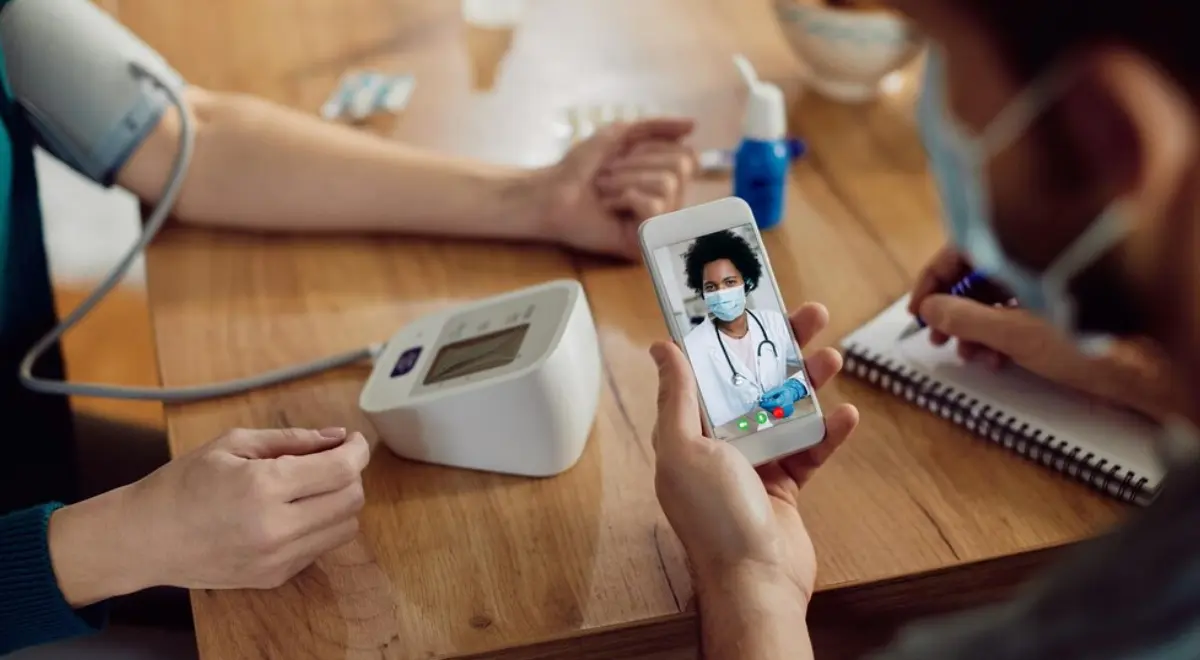Remote Patient Monitoring Role on Mental Health & Well-being

In a world where a staggering 1 in every 8 people grapples with a chronic mental disorder, the urgency of providing timely intervention and support is palpable. This equates to nearly 970 million individuals globally, with anxiety and depressive illnesses being the most prevalent.
Amidst this backdrop, Remote Patient Monitoring (RPM) shines as a pivotal solution. For healthcare professionals, RPM isn’t merely a tool—it’s essential. Join us as we explore its transformative role in mental health.
Table of Contents
ToggleWhat is a Remote Patient Monitoring System?
Remote Patient Monitoring (RPM) is a cutting-edge digital healthcare technology that allows for the continuous tracking of a patient’s health metrics outside of traditional medical settings.
It bridges the gap between in-person visits, enabling healthcare providers to observe patients in real-time, no matter where they are.
Role of Remote Patient Monitoring in Mental Health
This system plays a pivotal role in modern healthcare by offering timely interventions, reducing hospital readmissions, and providing a more comprehensive view of a patient’s well-being.
Take, for instance, a patient undergoing treatment for severe depression. An RPM device, possibly in the form of a wearable, can monitor indicators like sleep patterns, physical activity, and even voice tonality or text input patterns for signs of mood changes.
If the system detects irregular sleep cycles or decreased activity, which might suggest a depressive episode, it can immediately alert the therapist or care provider. This allows for timely interventions, such as therapy adjustments or immediate counselling, ensuring the patient receives the necessary support during vulnerable moments.
In a nutshell, RPM is revolutionizing mental health care, turning passive treatments into active, real-time interventions, ensuring health never gets compromised.
Real-Time Mental Health Tracking with Remote Monitoring Devices
In the evolving healthcare tech landscape, RPM stands out with its advanced functionalities:
- Sensor Technology
RPM utilizes high-precision sensors capable of detecting minute physiological changes. These sensors, combined with AI algorithms, can track and interpret patterns related to mood, sleep, and stress.
- EHR Integration
Through API endpoints, RPM tools integrate seamlessly with Electronic Health Records, ensuring real-time data synchronization. This bi-directional data flow ensures up-to-date patient profiles.
- Automated Alert Systems
Utilizing machine learning models, RPM tools analyze patient data against predefined thresholds. Any deviations trigger automated alerts, ensuring immediate attention to potential health concerns.
- End-to-End Encryption
Prioritizing data integrity, RPM tools employ end-to-end encryption protocols during data transmission. Additionally, secure cloud storage solutions with multi-factor authentication protect stored data.
- Device Interoperability
Adhering to HL7 and FHIR standards, RPM tools ensure data compatibility across various devices and platforms, facilitating a unified patient data view.
5 Effective Benefits of Remote Patient Monitoring
Remote Patient Monitoring (RPM) isn’t just a technological advancement; it’s a revolution in patient care, especially for healthcare providers, physicians, and care managers. Here’s a sneak peek to RPM benefits and why RPM is indispensable:
- Precision in Care
With real-time data, healthcare professionals can tailor treatments to the minute, ensuring that interventions are timely and precisely aligned with a patient’s current needs.
- Accessibility & Continuity
Regardless of geographical barriers, care managers and physicians can access vital patient data, ensuring that care is continuous and unhindered.
- Cost-Efficiency
Health organizations can realize significant savings by reducing hospital readmissions and unnecessary visits and enabling proactive, preventive care.
- Enhanced Patient Engagement
By being active participants in their care, patients experience better compliance, understanding, and trust in the healthcare process.
- Data-Driven Decision Making
For both physicians and EHR professionals, RPM provides comprehensive patient profiles, allowing for more informed and strategic healthcare decisions.
Addressing Challenges of Remote Patient Monitoring
But as with all innovations, RPM comes with its challenges. Data privacy stands tall, ensuring our patients’ confidence remains intact. Then, there’s the hurdle of technological barriers – ensuring accessibility for all, regardless of tech-savvies. And amidst this digital revolution, the essence of human connection remains irreplaceable.
For every care manager and physician, striking that balance between technology and the human touch is crucial.
Unlock the Future of Healthcare with HealthArc’s RPM Solutions
For healthcare professionals, the allure of RPM isn’t just about patient care—it’s also about the bottom line. HealthArc’s RPM services not only enhance patient outcomes but also maximize Medicare and private insurance reimbursements.
Seamlessly integrated, uniquely tailored, and backed by unparalleled support, HealthArc isn’t just a choice—it’s the gold standard for the next-gen healthcare professional.
Ready to transform your practice? Book a demo and discover our RPM solutions today.
Most recent blogs
Categories
- Advanced Primary Care Management
- Behavioral Health Integration
- Cellular Remote Patient Monitoring
- Chronic Care Management
- Chronic Care Management Billing
- Chronic Care Management CPT Codes
- Chronic Care Management Program
- Chronic Care Management Software
- Digital Health Platform
- Principal Care Management
- Principal Care Management CPT Codes
- Remote Care Programs
- Remote Monitoring Devices
- Remote Patient Care
- Remote Patient Monitoring
- Remote Patient Monitoring Billing
- Remote Patient Monitoring CPT Codes
- Remote Patient Monitoring Devices
- Remote Patient Software
- Remote Therapeutic Monitoring
- Remote Therapeutic Monitoring Billing
- Remote Therapeutic Monitoring CPT Codes
- Telemedicine & RPM
- Transitional Care Management
- Transitional Care Management Billing
- Transitional Care Management CPT Codes
Related Posts
- February 21, 2025 | Read Time: 5 mins
RPM’s Role in Identifying Early Symptoms of Chronic Conditions for Prevention
- February 14, 2025 | Read Time: 4 mins
Monitoring Post-Surgical Recovery With RPM Systems
- February 10, 2025 | Read Time: 5 mins






